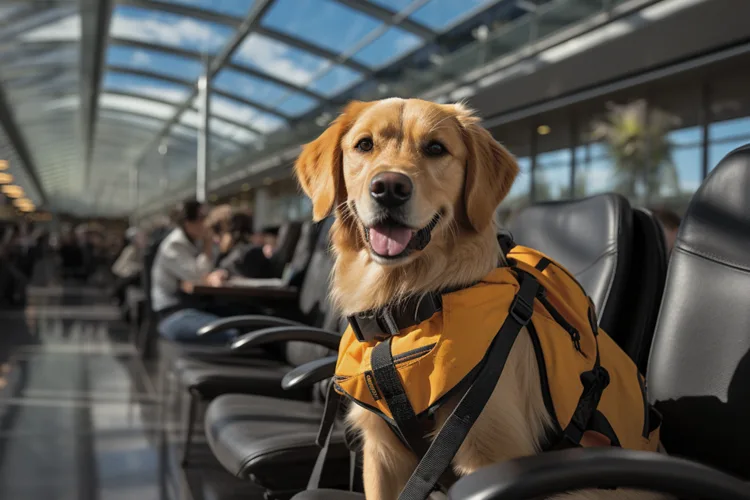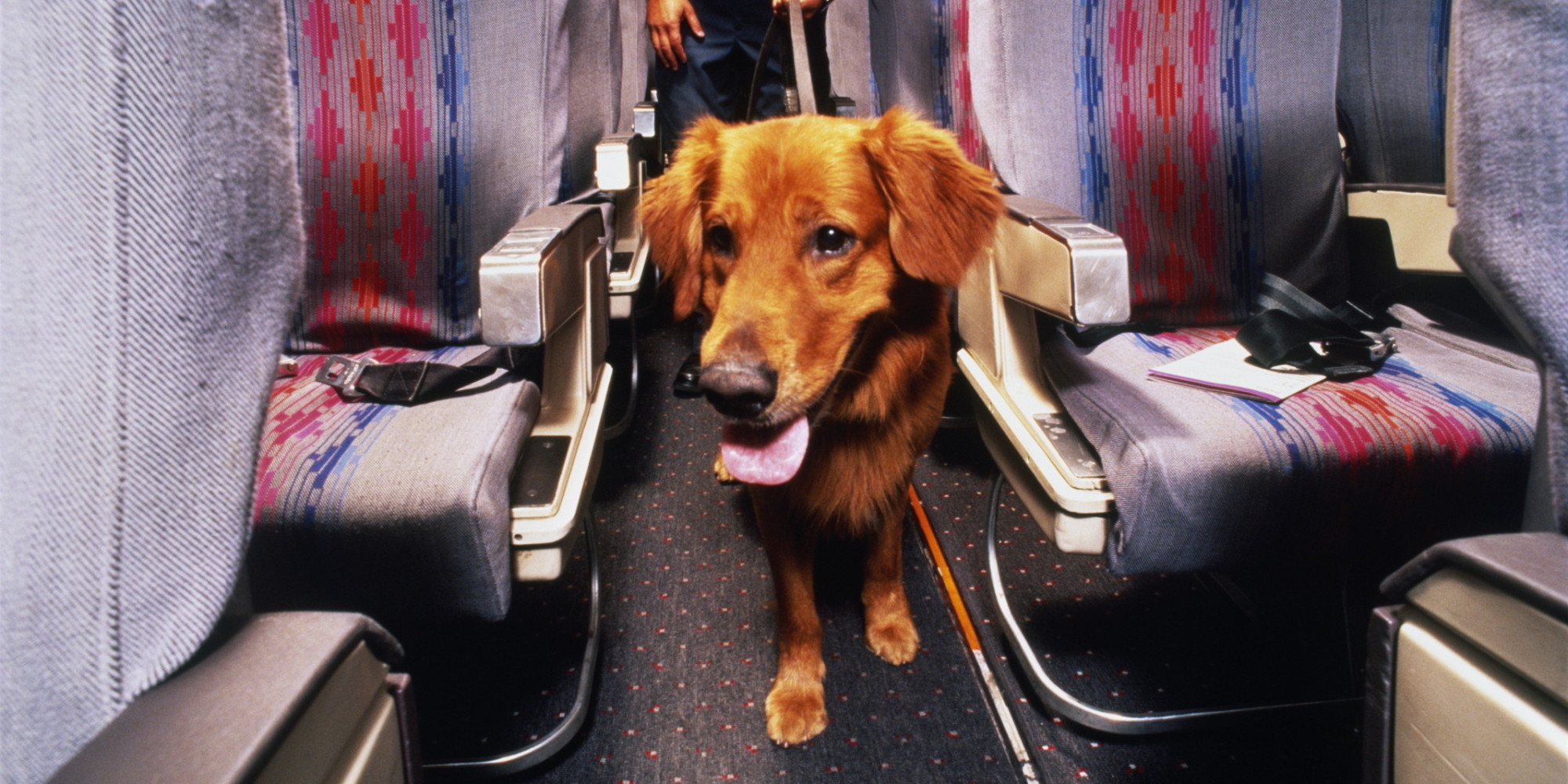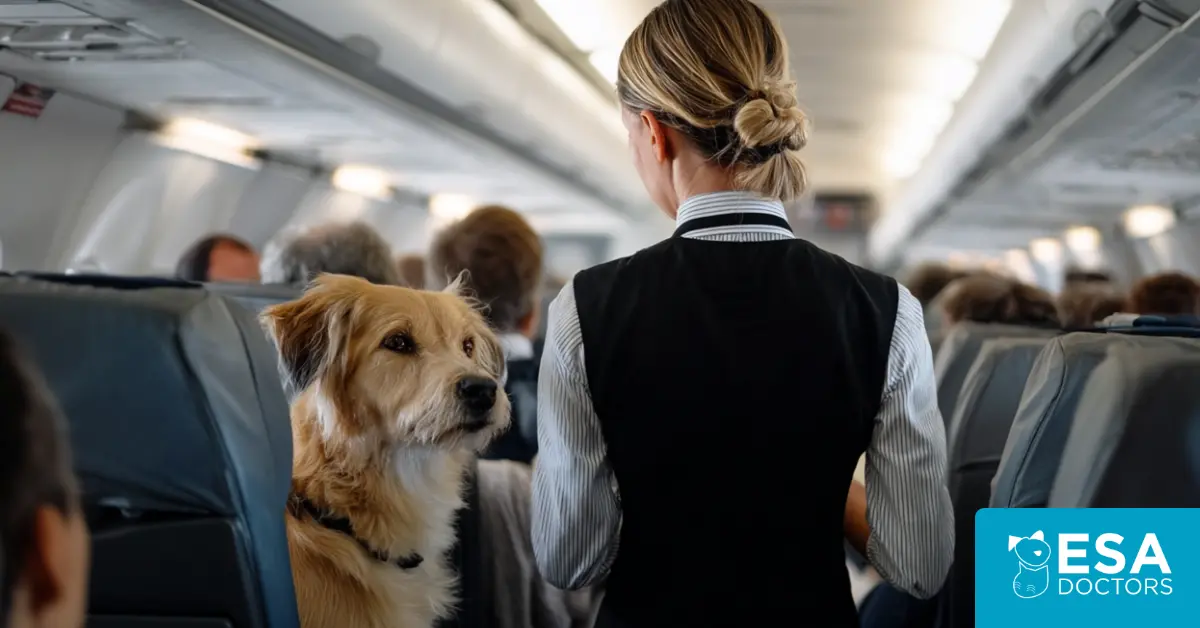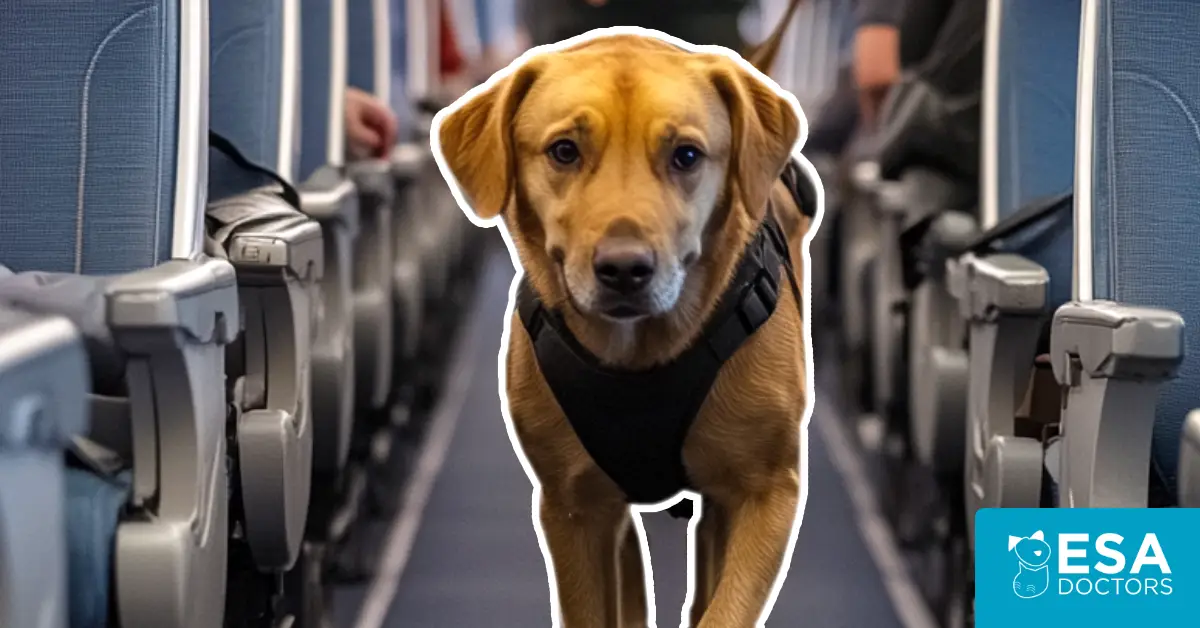Traveling can be an exhilarating experience, but for Golden Retriever owners, the idea of flying with their beloved canine companion can be daunting. Given their size and friendly nature, there are unique considerations to keep in mind.
Whether your Golden Retriever is a beloved pet, an emotional support animal, or a trained service dog, this guide provides practical advice to ensure a smooth journey for both of you.
Know the Basics
Airline Policies: Before booking, check the airline’s pet policy. Most U.S. carriers only allow smaller breeds in the cabin, meaning your Golden Retriever may have to travel in the cargo hold (which most owners will not even consider). Policies can also vary in terms of fees, crate requirements, and health certificates.
Health Considerations: Schedule a visit with your vet before traveling. Make sure you understand what health certificates your airline may need. Ensure your Golden is up-to-date with vaccinations, and consider calming supplements and their favorite toys and blankets if they’re a nervous traveler.
Special Considerations for Golden Retrievers

Golden Retrievers are a special breed of dog that requires special care.
Crate Size: Flying with a dog in cargo is a topic of considerable debate among pet owners, animal advocates, and the airline industry. While many dogs have flown in cargo without incident, there are risks associated with it. We advise owners to never transport their dogs in cargo. However, if it is absolutely necessary, ensure the crate is spacious enough for them to stand, turn, and lie down comfortably. Some airlines have crate size guidelines, so check in advance.
In the Cabin: If your Golden Retriever is able to board the cabin because it is a service dog (more about this below), note that they must fit in the footwell of your seat. Service dogs cannot take up space in the aisle or encroach on another passenger’s space. Let the airline know in advance about your needs so the flight crew can do their best to accommodate you.
Hydration: Larger dogs can dehydrate faster, especially in stressful situations. Make sure you have a supply of water readily available for your dog at all times.
Exercise Before the Flight: A tired Golden is a calm Golden. Give them a good exercise session before heading to the airport. This can reduce anxiety and restlessness during the journey.
Shedding: Golden Retrievers are known for their beautiful, thick coats. However, they also shed, especially during seasonal changes. Before the flight, brush them thoroughly to reduce the loose fur, which can help keep them comfortable during the journey.
Temperament: Golden Retrievers are generally friendly and sociable dogs. Your Golden might be curious about passengers walking by or sitting nearby in the cabin and airport. Ensure they’re calm and not a nuisance to others. While some Goldens might become anxious, others could seek out interactions as a way to comfort themselves. Be aware of your dog’s specific temperament and needs.
Health Checks Specific to Goldens: Golden Retrievers have some common health issues. For example, Goldens can be prone to hip dysplasia and other joint problems. Ensure they’ll be comfortable, especially on long flights. If your Golden is older or shows signs of discomfort, consult your vet about potential concerns with flying.
Flying with a Service Dog Golden Retriever
Golden Retrievers are a popular choice for people with service dogs. Their intelligence and eager-to-please demeanor make them the perfect service dog for people with physical or psychiatric disabilities.
Service dogs can legally board the cabin of planes with their owners, free of charge.
Here are some tips for flying with Golden Retrievers that are service animals:
Documentation: To travel with a service dog in the U.S., you will need to complete the DOT’s service animal air transportation form. While not required, owners of psychiatric service dogs will often travel with a PSD letter.
If you are interested in a Psychiatric Service Dog Letter for your Golden Retriever, we are happy to connect you with a licensed healthcare provider so they may assist you.
Training: Service dogs are expected to be well-behaved at all times. Ensure your dog is comfortable with the airport environment – such as loud noises, crowds, and tight spaces. Regular training sessions can help them adapt.
Seating Arrangements: Inform the airline in advance that you’ll be flying with a service dog. They can try to allocate suitable seating, ensuring enough space for your Golden Retriever to sit or lie down at your feet.
Service dog accessories: Even though they’re not required, having accessories like vests, tags, and ID cards can be especially helpful at airports and on planes. They help inform fellow passengers and airline staff that you are accompanied by a working animal, not a regular pet.
Note about emotional support animals: As all service dog owners know, an emotional support animal is not a legal service dog. ESAs, unfortunately, are no longer accommodated on flights due to air travel regulatory changes. If your Golden Retriever is an ESA, it will not be able to fly as a service dog.
Practical Tips from Seasoned Travelers
Avoid Sedation: Many vets advise against sedating your pet for flights. Sedation can affect their balance and natural ability to regulate body temperature.
Direct Flights: If possible, book direct flights. This minimizes the stress of transfers and reduces the risk of mishandling.
Early Check-in – Arrive at the airport early: Give yourself enough time to address any last-minute requirements to ensure a smoother boarding process.
Feed Sparingly: Feed your dog a light meal about four hours before the flight. This minimizes the chances of an upset stomach.
Identification: Ensure your dog has a collar with an ID tag. Additionally, mark the crate with “Live Animal,” your contact information, and a photo of your Golden Retriever.
Post-Flight Check: Once you land, check on your dog immediately. Ensure they’re hydrated, and give them a quick health check.
The Emotional Aspect
Flying can be stressful, both for you and your Golden Retriever. Here’s how to ensure emotional well-being:
Stay Calm: Dogs, especially Goldens, are adept at picking up our emotions. Your calm demeanor can help your dog stay calm, too.
Comfort Items: Pack your dog’s favorite toy or blanket. Familiar scents can be reassuring in unfamiliar environments.
Reassurance: If your Golden is in the cabin with you, occasionally reassure them with gentle pets or soothing words.
Conclusion
Traveling with a Golden Retriever, whether as a pet or service dog, requires careful preparation. By considering their physical and emotional needs and ensuring all documentation and technicalities are in order, you can make the experience pleasant.
After all, the joy of exploring new places is only enhanced when shared with your loyal four-legged companion. Safe travels!
Need a PSD letter from a licensed therapist?
See if you have a qualifying disorder for a PSD by clicking below.





Leave a Comment